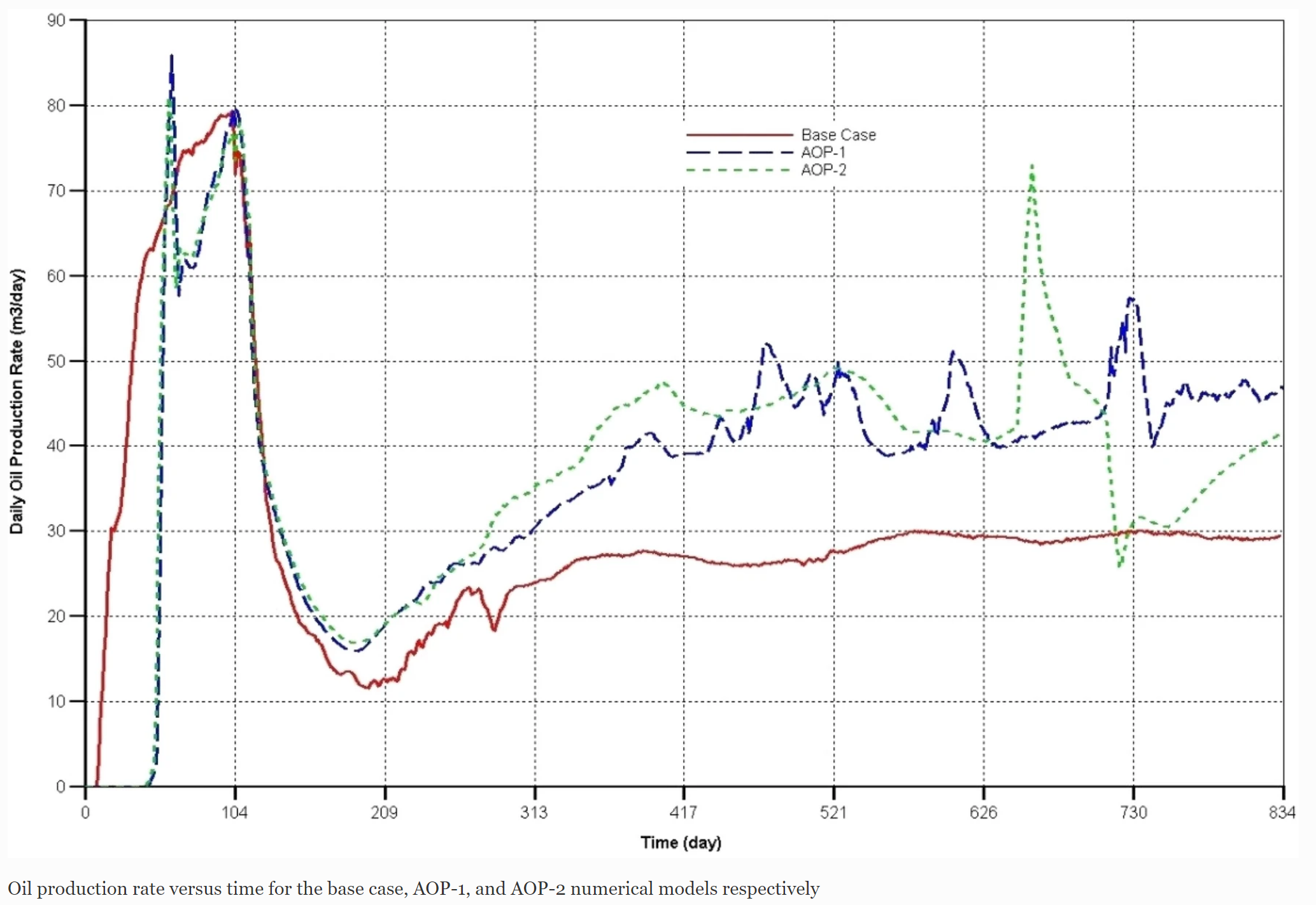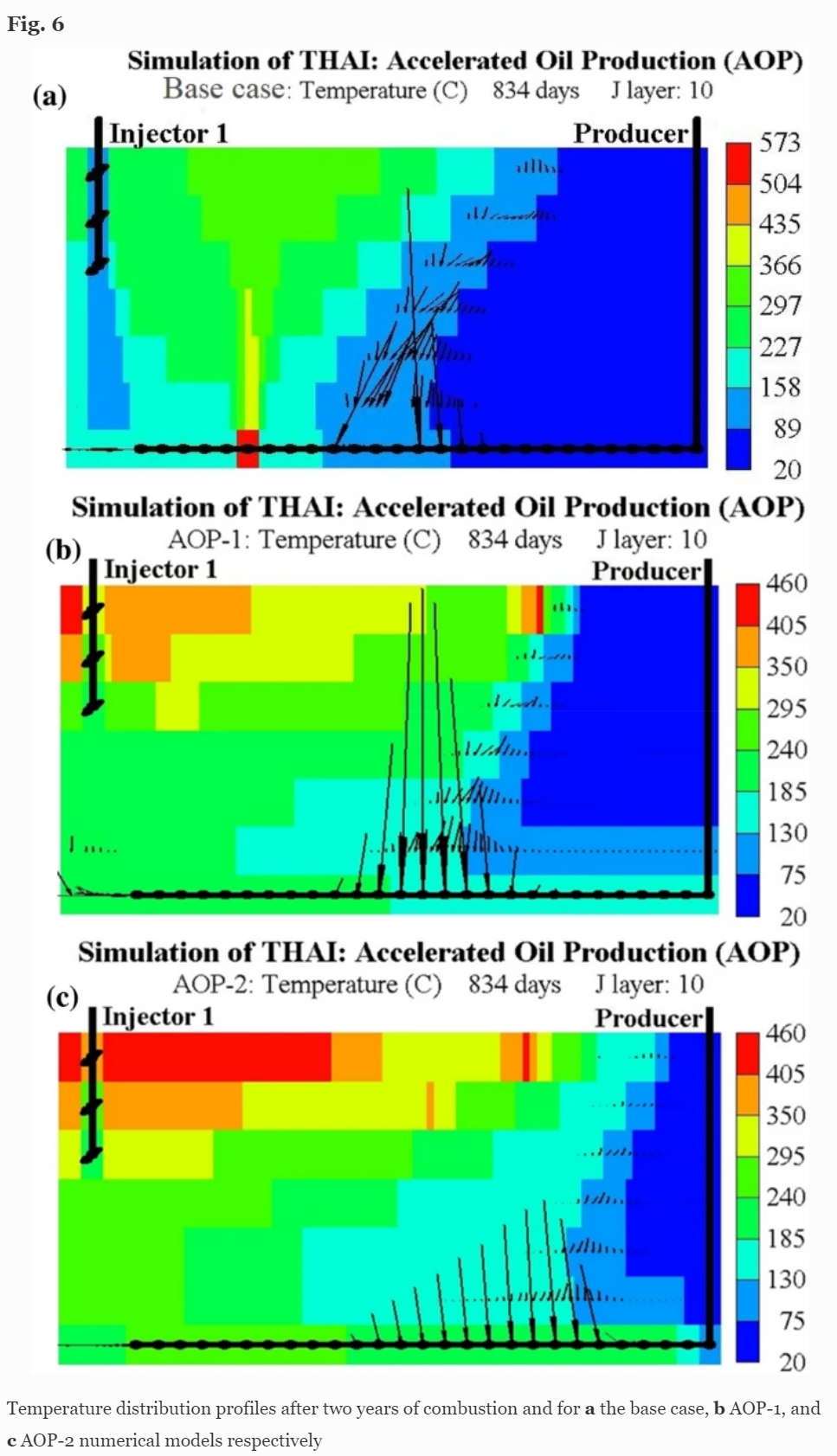Electrically-enhanced THAI in situ combustion technology for upgrading and production of heavy oil
Abstract
Nearly 70% of the global oil reserves are made up of unconventional oils such as heavy oils, bitumen, and tar sand. However, they are yet to be fully exploited as a result of the capital-, energy-, water-, wastewater-, and carbon-intensive nature of their development. To be in consistent with the current goals of climate crisis mitigations, technologies that are more environmentally friendly with high efficiencies are needed. This is where the toe-to-heel air injection (THAI) in situ combustion process comes in. However, experiments and semi-commercial operations have shown that THAI is a low-oil-production-rate process where there was nonlinear relationship between air injection rate and oil production rate. Therefore, to find out about the feasibility of adding an extra source of heat in order to improve oil production rates and with the second aim of testing the possibility of heating an annular catalyst layer surrounding the horizontal producer (HP) well such as in the in situ catalytic upgrading process (CAPRI™), a first-of-a-kind study of electrically-enhanced THAI (i.e. eTHAI) process is presented in this paper. The eTHAI involves surrounding the HP well with the electrical heating coils in which induced current flows so that heat is generated and released in the reservoir. Through reservoir numerical simulations using CMG STARS, it is found that it is indeed possible to electrically heat the HP well whilst conducting pre-ignition steam injection and subsequently operating in situ combustion. Regardless of the rate of heating, it is found that the shape and the stability of the combustion front are not affected by the incorporation of the electrical heating around the HP wellbore. In the eTHAI process, addition of extra heat from the electrical heating coils resulted in increased cumulative oil production to 32,000 m3 compared to 25,000 m3 in the base case model over the 834 days of process time. This is an increase in oil recovery by 28% over the same period compared to in the base case model. It is concluded that the resulting acceleration in oil production rates and recoveries implies earlier realisations of returns on investment. Moreover, it is found that the higher the rate of electrical heating, the wider the length of the HP well used for mobilised oil production (i.e. the wider the thickness of the mobile oil zone (MOZ)). It is also discovered that the higher the electrical heating rate, the less the air cooling effect and in turn the higher the quantity of heat that is distributed inside the reservoir. As a result, it is concluded that the increased distribution of higher quantity of heat by the heated air coming from the outlet zone of the VI wells of the eTHAI models results in increased oil mobilisation and production rates. However, future work should investigate the limiting electrical heating rate beyond which no appreciable increase in oil production rates is achievable. Finally, it is shown that electrically-enhanced THAI process operates stably, efficiently, and selective sectional heating of catalyst-surrounded wellbore is indeed feasible.
沙特萨尔国王大学工程学院化学工程系





